Marsannay, Modest But Fully Realized Burgundy. Côte d’Or’s Northernmost Edge Coming of Age in The Hands of Four Praiseworthy Producers (8-Bottle Pack $399)
Thanks to its proximity to Dijon, Marsannay is known as the ‘Porte d’Or’ or the Golden Gate to the Côte de Nuits. In showcasing a specific wine region, we try to emphasize wines that reflect both the spirit of the appellation and the skill and reputation of the winemakers. The four producers represented in this week’s eight-bottle pack have established their place not only in Marsannay, but in the Burgundy vigneron hierarchy.
Marsannay, Modest But Fully Realized Burgundy
Marsannay—the northernmost village in Burgundy’s heart—is a stellar introduction to the galaxy of possibilities offered by the Côte d’Or. That is because, as a fairly new invention within the wine hierarchy (Marsannay only achieved Village status in 1987, prior to which its grapes were used for regional wines), price has not yet caught up to quality, even among other Village-level wines.
Perhaps more than in any other wine region, Burgundy’s fans are label-obsessed and purchase accordingly—and appropriately. Since Marsannay contains none of the storied Grand or Premier Crus in the carefully delineated Burgundy classification system, these wines represent unparalleled value, especially since many individual estates have forged new commitments to improve what history and nature has provided.
The Rehabilitation of Marsannay
Having been offered an upgraded seat in Burgundy’s Villages section, Marsannay has set to work ensuring that it remains worthy of the promotion. Many people still think of it as primarily rosé country, and it is, in fact, the only village entitled to produce in all three tones, red, white and blush. And there is no reason for it to entirely shed this reputation.
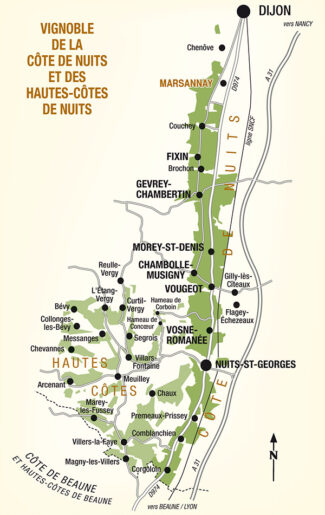
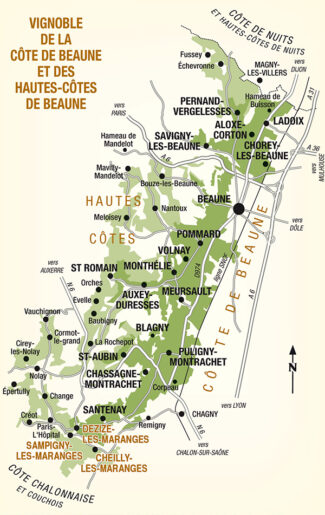
Stretching from Fixin at its southern end to Dijon in the north, three villages (Marsannay-la-Côte, Chenôve and Couchey) contain vineyards that are allowed to declare themselves Marsannay. All three are on the hill that continues north from Gevrey-Chambertin, where the best vineyards are on gentle slopes that face east or southeast and feature terroirs rich in fossil-rich Bajocian limestone. As can be witnessed throughout the Côte d’Or, inferior vines come from the east side of Route Nationale 74 (now called, prosaically, the D974).
In the case of Marsannay, any red or white wine produced east of the road only merits Bourgogne status; technically, the rosés are labeled ‘Marsannay Rosé.’
With new status comes heightened responsibilities, and winemakers in Marsannay find themselves with both the need and the means to rehabilitate reputations once maligned in the Côte de Nuits. Beyond technical investments in state-of-the-art equipment, new theories about working the soil, machines for optical sorting and for pressing and maturing wine, there have been human investments in both field and cellar. Even so, at the heart of it, is Burgundy’s table-stakes: Reverence for the past, nods to the future and above all, a heartfelt respect for terroir and the commitment to identify the best parcels and vinifying those grapes separately.
Fight for Recognition: Pinotism Reigns
‘Pinotism’ is a term coined by the great Andrew Jeffords in describing the cult-like affection that Burgundy lovers have for their pet Pinot Noir, a finicky, difficult-to-ripen grape that commands loyalty like no other red wine variety, in part from the elusive mystery of its rocks-and-roses sensuality, and also—paradoxically—because the opposite is also true: Pinot Noir can appear as a sparkling, white, red or rosé; it goes with nearly everything, salmon to steak, which explains its popularity in restaurants.
In Burgundy, Pinot Noir reaches its fascinating apogee because of its most admirable trait: Given the correct environment, Pinot Noir can reflect the site where it is grown with greater clarity than any other varietal.
In Marsannay—a village once known for its Gamay—it is now the most widely planted grape, as integral to rosé (which also contains Pinot Gris and around 10% Chardonnay and Pinot Blanc) as it is to the robust reds of Chenôve and Couchey. In all, 445 acres of Marsannay’s vineyards are dedicated to red and rosé wine production with 69 acres used for Chardonnay-based whites.
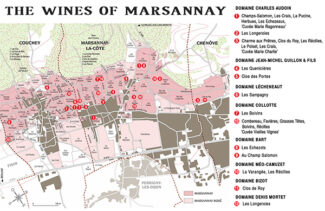
This Week’s Package
We are pleased to offer one bottle of each of the following four producers in eight wines for a package price of $399.
Domaine Charles Audoin
Nobody knows the terroir of Marsannay quite like the Audoins. Having worked the soil and sold to négociants for multiple generations, 1972 heralded the year when the domain started bottling its own product. Under the management of Charles Audoin, the Audoin name on the label coincided with the expansion of the holdings from 6 acres to nearly 35.
Charles’s son Cyril took the reins in 2009, but Charles still remains active in the day to day operations, particularly in the vineyards. Cyril chose to keep the domain under his father’s name, as he credits his father with bringing the most change and attention to the property.
Says Cyril, “Farming at the domain falls under the sustainable lutte raisonnée method, and we farm almost exclusively with organic practices. I have chosen to farm with the environment in mind, and all harvesting is done by hand with selective sorting done at several stages. Our wines are made in a very traditional manner—reds see a varying degree of whole cluster inclusion during ferments, though rarely more than 30%, and in some years, there is no stem inclusion at all. This is dependent on the vintage and ripeness of the fruit and stems. Extractions are on the lighter side, keeping with our focus on allowing the fruit to show the elegance and grace of our terroir.” Élevage for all their wines is carried out in barrel, mostly neutral but with varying degrees of new oak depending on the cuvée.
Although the domain owns and bottles a couple of wines from Village-level sites in both Gevrey-Chambertin & Fixin, the heart of the domain is in Marsannay, where they produce seven different red bottlings, four whites and a rosé (as well an Aligoté). Of those bottlings, seven Pinots and Chardonnays are from single sites; 3 whites and 4 reds.
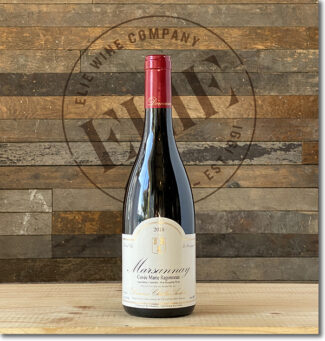 Domaine Charles Audoin ‘Cuvée Marie Ragonneau’, 2018 Marsannay ($44)
Domaine Charles Audoin ‘Cuvée Marie Ragonneau’, 2018 Marsannay ($44)
Named after Cyril’s great-grandmother, the blend originates from several top Audoin old vine parcels—Champs-Salomon, Les Crais, La Pucine, Herbues and Les Echezeaux. It’s intended as a representation of the village rather than a single vineyard. Tart cherry, cranberry and raspberry weave through a taut mineral core with black pepper and earth notes emerging on a mineral-driven finish.
*click image for more info
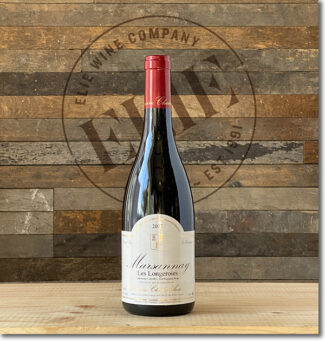 Domaine Charles Audoin, 2017 Marsannay ‘Les Longeroies’ ($50)
Domaine Charles Audoin, 2017 Marsannay ‘Les Longeroies’ ($50)
Les Longeroies is the largest of the Marsannay appellation lieux-dits; it sits on the northern side of town, halfway up the hill and just south of Clos du Roy. At higher elevations, the berries get smaller and are more susceptible to the uneven sizes (called millerandage), whereas the grapes produce larger, denser bunches on the deeper soils below. The wine is delicate and expressive, revealing notes of cherry, raspberry, violets, mushroom, and damp earth layered with fine tannins and bright acidity, ending with a seamless finish framed with minerals and earth.
*click image for more info
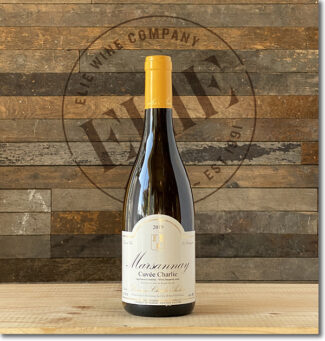 Domaine Charles Audoin ‘Cuvée Marie Charlie’, 2019 Marsannay Blanc ($44)
Domaine Charles Audoin ‘Cuvée Marie Charlie’, 2019 Marsannay Blanc ($44)
100% Chardonnay from Charme aux Prêtres and Clos du Roy, as well as a small portion of grapes from Les Récilles, Le Poiset and Les Crais. The bunches are 100% destemmed and cold macerated, and not crushed during pneumatic pressing in order to preserve the aroma and freshness. The wine then spends a year in 20% new oak barrels from the Vosges and six months in tanks, after which the wine is bottled without fining or filtration. The wine shows notes of honeysuckle and citrus while the oak provides a touch of toasted vanilla.
*click image for more info
Domaine Jean-Michel Guillon & Fils
The pilot of Domaine Guillon & Fils is indeed a pilot: When he first established himself in Burgundy in 1980, he flew planes for the French Navy—neither he, nor anyone in his family, had ever been involved in the wine trade. But he loved Burgundy, so he took an analytical approach and studied what experienced masters in the region did (including Rousseau, Dugat-Py and Denis Bachelet) and built up relationships that ultimately led to his acquisitions of vineyards. Today, the domain covers 35 acres including parcels in the Grand Cru sites of Clos de Vougeot and MazisChambertin.
In 2005 his son Alexis joined the business, and today carries forward the family legacy. He says, “Our goal is to produce succulent wines that retain a clear sense of style and grace while remaining identifiably Pinot Noir. This can only be attained by attention to detail in the vineyard with yields kept low to produce the best fruit, and scrupulous vinification methods using 100% of the finest new oak. This is an approach we carry across the entire range of our wines, including the Marsannay.”
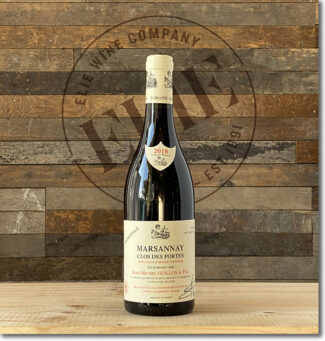 Domaine Jean-Michel Guillon & Fils, 2018 Marsannay ‘Clos des Portes’ Monopole ($60)
Domaine Jean-Michel Guillon & Fils, 2018 Marsannay ‘Clos des Portes’ Monopole ($60)
Jean Michel purchased the entire Clos des Portes lieu-dit in 2005, making it a monopole. Farmed at yields similar to his Grand Crus, it’s said to resemble Gevrey-Chambertin before a Marsannay. Either way, it is a delicious and concentrated wine with lovely black raspberry fruit, spice, garrigue and fine nuances of raspberry pulp, lime and hints of hibiscus and jasmine.
*click image for more info
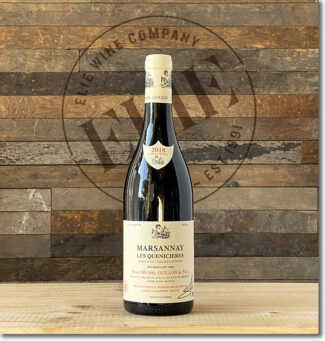 Domaine Jean-Michel Guillon & Fils, 2018 Marsannay ‘Les Quenicières’ ($57)
Domaine Jean-Michel Guillon & Fils, 2018 Marsannay ‘Les Quenicières’ ($57)
A discreet application of wood serves as a backdrop for the pretty plum, violet, earth and slightly gamy aromas; there is a mild touch of austerity to a balanced and refreshing finish.
*click image for more info
Domaine Lécheneaut
Having been founded in the 1950s by Fernand Lécheneaut, the domain launched modestly, with five acres of vineyard in Nuits-Saint-Georges, Chambolle-Musigny and Morey-Saint-Denis. During these early years, Lécheneaut sold bulk wine to négociants, but in 1985, his sons Philippe and Vincent took over and brought with them an expanded vision. They grew their vineyard holdings while they began to bottle at the estate. The new Lécheneaut plots, including several Premier Cru vineyards in Chambolle-Musigny and Gevrey-Chambertin, speckle the map of the Côte de Nuits from north to south, but judiciously—many of the holdings are under an acre. With vines in 23 appellations, the total land under their management is around thirty acres.
As the Lécheneaut brothers approach retirement, Vincent’s son Jules has joined the team with a view toward combining lessons learned in his experiences working vines in Oregon with the exceptional terroir his family nurtures. He says, “The essence of our terroir philosophy is that a given wine should demonstrate—through its weight, smell, taste and nuance—its place of birth. Failing to prepare for this goal even before the first root stock goes into the ground can compromise the results years down the line. In the vineyard, Burgundian sensibility is a practice that involves ecology, and soil is only one part of that. Of equal importance is a thorough understanding of the site and which clone will best mirror the available orientation, the local topography and the climate.”
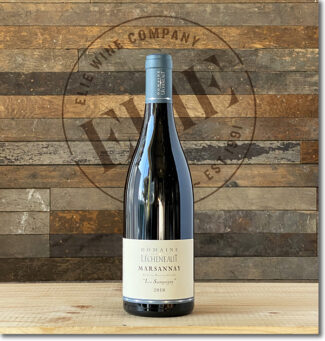 Domaine Lécheneaut, 2018 Marsannay ‘Les Sampagny’ ($72)
Domaine Lécheneaut, 2018 Marsannay ‘Les Sampagny’ ($72)
Les Sampagny, facing east southeast, is found on a Couchey hillside where the soils lie on bedded sediment strata from the mid-Jurassic, with marls of oestra acuminate. With a production of 1500 bottles, this is a highly allocated wine that shows ripe cherry and blackberry compote enmeshed in a matrix of supple tannins and bright acidity.
*click image for more info
Domaine Collotte
Philippe Collotte is a tall, quiet and unassuming man, said to be cut from the Gary Cooper cloth; his wines, perhaps, do the talking. Specializing in lower yields, intensive selection before and at harvest and de-stemmed fruit, he bottles everything unfiltered from old vines, most over fifty years and one parcel planted in 1947. Tillage is done by plowing, without chemical weed-killers with yields are well below the appellation’s allowances. All fermentations are done with indigenous yeasts.
Recently, having completed viticulture school, Philippe’s daughter Isabelle has joined her father and specializes in making the family’s superb Marsannay blancs. She speaks with great enthusiasm about the estate: “There was a time when Domaine Collotte in Marsannay-la-Côte only had three hectares of vineyards. In recent years it has grown considerably. In 2015 there was 13 hectares (32 acres) under vines; in 2016 there was 15 hectares (37 acres) and in 2017, 17 hectares (42 acres). And that’s is about as much as we can handle. There is a limit to what we can do with our resources and still do a good job with our terroirs.”
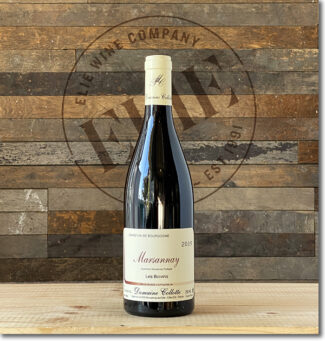 Domaine Collotte, 2019 Marsannay ‘Les Boivins’ ($41)
Domaine Collotte, 2019 Marsannay ‘Les Boivins’ ($41)
The rounded hilltop in Marsannay where Les Boivins sits is similar to the one in Gevrey where the top Premier Crus reside. Boivins occupies the same relative position as Combe aux Moines in Gevrey. The soil is likewise the same: Crinoidal limestone rich in fossilized sea urchins and starfish. The grapes are 100% de-stemmed and spend 18 months in élevage, resulting in an open-knit bouquet with crushed strawberry mixed with orange pith and loamy aromas of pine, black olive and sweet cherries with hints of spice.
*click image for more info
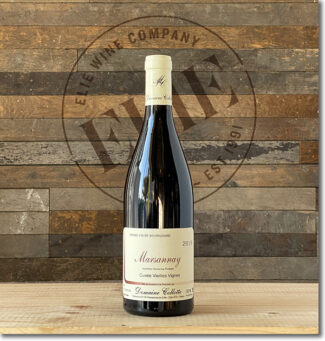 Domaine Collotte ‘Cuvée Vieilles Vignes’, 2019 Marsannay ($31)
Domaine Collotte ‘Cuvée Vieilles Vignes’, 2019 Marsannay ($31)
Cuvée Vieilles Vignes is assembled from five different terroirs with Collotte control, Combereau, Favières, Grasses Têtes, Boivins and Récilles where vines average 50 years old. Completely destemmed, the wine’s fruit expression is ‘joie de vivre’; medium-bodied with supple, grainy tannins, bright acidity and red cherry and blackberry fruit through to the finish.
*click image for more info
Other Producers
The following wines are also available. These older vintages have been kept at optimal conditions and will demonstrate the amazing ability of well-made and properly-curated Marsannay to mature and evolve.
Domaine Bart
Fifteen years ago, the winegrowers of Marsannay started the process of having part of the appellation upgraded to Premier Cru. At Domaine Bart, which produces as many as nine different Marsannay bottlings in a given vintage, it is believed that 25% and 30% of the appellation is up for this bump upstairs. Pierre Bart, the sixth generation to run Domaine Bart, says, “We are trying to show which climats would be of interest and which ones should remain in the village appellation. My guess is that there will be five or six Premier Crus. probably the largest ones like Champs Perdrix, Champ Salomon, Clos du Roi, Longeroies and Montagne.”
The Bart domain covers 54 acres, mostly in Marsannay, but with a few parcels in Fixin, Gevrey-Chambertin, Chambolle-Musigny and Santenay. “My grandmother comes from the same family as Domaine Bruno Clair,” explains Pierre Bart. “Part of the vines come from that side of the family, part from my grandfather’s side. The Bonnes Mares and the Chambertin Clos de Bèze mainly come from my grandmother. 35 years ago, when my uncle arrived at the domain, the style of the wines changed. He increased the size of the holding, mainly in Marsannay. He chose to improve quality, both in terms of equipment and in winemaking. Since then we haven’t changed our vision a single iota.”
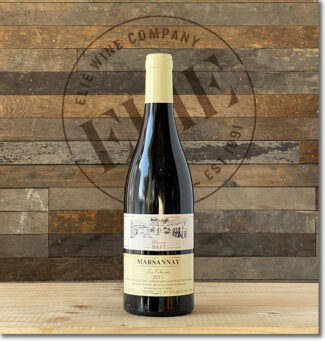 Domaine Bart, 2015 Marsannay ‘Les Echezots’ ($68)
Domaine Bart, 2015 Marsannay ‘Les Echezots’ ($68)
Les Echezots sits at one of the highest elevations in Marsannay, with parts of the vineyard at over 900 feet as it snuggles against the Bois des Francs forest. Because of this, it is the last plot that the Bart family harvests in a given year. Echezots benefits from stronger winds, which keeps rot and other maladies away from the grapes. Domaine Bart considers this their ‘brightest’ wine; it is always made in 600-liter demi-muids instead of the standard sized Burgundy barrel. It displays wild strawberries and slight smokiness above a velvety-textured body where the acidity, though sharp, is enveloped in the fruit.
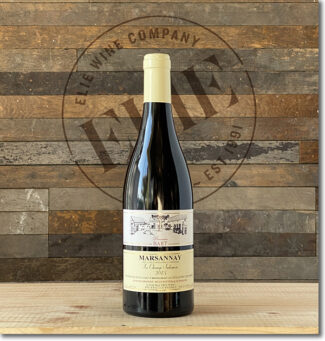 Domaine Bart, 2015 Marsannay ‘Au Champ Salomon’ ($78)
Domaine Bart, 2015 Marsannay ‘Au Champ Salomon’ ($78)
Situated in the southern part of Marsannay, Au Champ Salomon is one of the premier vineyards in Couchey. The vineyard is planted mid-slope, producing wines that combine power and elegance with a propensity to age extremely well. It shows a complex, mature bouquet of wild mushrooms and earthy aromas with a rich burst of fruit in the mid-palate and a shivery minerality on the finish.
Domaine Méo-Camuzet
Located amid the rolling hills of Vosne-Romanée, Méo-Camuzet covers 35 acres in some of the most prestigious appellations and crus of Burgundy. As a rule, Burgundy is highly parceled land, making it rare for anyone to have enough vines to be able to bottle one Grand Cru—the Méos have six.
Étienne Camuzet and Jean Méo, after whom the estate is named, were politicians—Méo served as a member of Charles De Gaulle’s cabinet and Camuzet represented the Côte d’Or in Paris. As a result, the stewardship of the vines was left to the métayeurs, or share-croppers. When, in 1985, Jean-Nicolas Méo took over as director of sales and the cellar, he opted to put the vineyards in the capable hands of Christian Faurois, son of one of domain’s métayeurs, who had dedicated himself to these vineyards since 1973.
In the wines, Jean-Nicolas aims for balance and purity of fruit. “Delicate and fine even in their youth”, he says, “the concentration and intensity make them ideal for long cellar; they are a Burgundy lover’s dream. We bottle six Grand Crus from Richebourg, Clos de Vougeot, Echézeaux, Corton Clos Rognet, Corton Les Perrières, and Corton La Vigne au Saint, ten premier crus from the communes of Vosne-Romanée, Nuits-St-Georges, Chambolle-Musigny, and Fixin several village wines and one Bourgogne Rouge.”
His Marsannay comes from a parcel where the vine age averages more than sixty years.
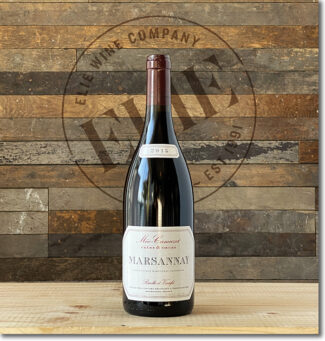 Méo-Camuzet Frère & Sœurs, 2015 Marsannay ($150)
Méo-Camuzet Frère & Sœurs, 2015 Marsannay ($150)
A négoce label (otherwise known as a négociant or micro-négoce), indicates a wine merchant who purchases grapes, juice, or finished wines and vinifies/bottles them under his/her own name. On the palate the wine is deep, full-bodied and remains plush on the attack, offering a mix of sweet dark berries, black cherries, dark soil tones, espresso and a smoky top-note.
*click image for more info
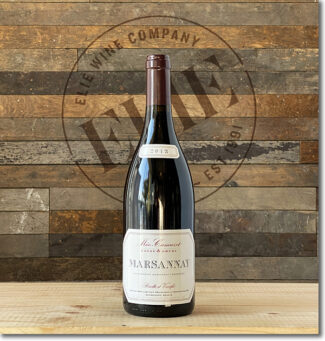 Méo-Camuzet Frère & Sœurs, 2013 Marsannay ($150)
Méo-Camuzet Frère & Sœurs, 2013 Marsannay ($150)
Again, a négoce label: One reason a winemaker may choose to operate this way is that vineyard sites, especially in prestigious regions, are extremely expensive, so a simple way for winemakers to cut costs is by purchasing fruit from an existing grower. The wine offers mature red berry fruit, raspberry jam, a little sour cherry; there is some green tea mid-palate and modest tannins.
*click image for more info
Domaine Bizot
Jean-Yves Bizot is a professor of viticulture and oenology in Beaune who lives in Vosne- Romanée across the street from the old residence of the legendary winemaker Henri Jayer. With neighboring parcels in Vosne, the two vignerons used to discuss technique while working their vines and Bizot decided to adapt some of Jayer’s tricks in his own cellar, such as cooler temperatures for pre-fermentation. He still swears by his own methods, including the exclusive use of whole clusters grown organically and his refusal to use sulfur during vinification and élevage.
Bizot generally produces tiny quantities of under-the-radar Burgundy, but the distinct and rigorous philosophy he has forged for his domain ensure that it will be a model for future generations.
Recently, the professor made two purchases in the far north of the Côtes-de-Nuits, terroir that he believes are under-valued by the current generation, although they were highly regarded in past centuries. Both old-vine vineyards are just south of Dijon: Bourgogne Le Chapitre and in Marsannay, Clos du Roy.
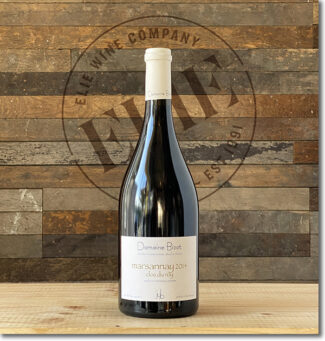 Domaine Bizot, 2014 Marsannay ‘Clos de Roy’ ($140)
Domaine Bizot, 2014 Marsannay ‘Clos de Roy’ ($140)
Clos du Roy, located in Chenôve, is the northernmost lieu-dit in Marsannay; it sits at vineyard sits at 900 feet and faces southeast. Soils are light, gravelly, calcium-rich ‘grèzes litée ‘near the top of the slope with red sandy marl toward the bottom. The wine is filled with savory notes of earth, herbs and forest floor with a touch of menthol and dried coriander; the core fruit remains, evolve into berry compote.
Domaine Denis Mortet
The name Henri Jayer resurfaces in the Mortet story as well. An iconic figure in Burgundy who started his career working with his father at Domaine Charles Mortet, Denis Mortet took over the winemaking duties in the 1980s, at which time, he met Henri Jayer, leading to a lifelong friendship… and mentorship. In 1991, when Charles Mortet retired, he split his holdings between his two sons. Denis took his vineyard inheritance and launched Domaine Denis Mortet; his wines drew influence and techniques from Jayer. When Denis died suddenly in 1999, his son Arnaud took the helm with a similar respect for both his father’s skills and those of his father’s mentor.
With the assistance of his sister Clémence and his mother Laurence, Arnaud Mortet has enhanced the quality of the farming for which the original estate was known. At the same time, he has evolved the style of the wines, reducing new wood, lessening the level of extraction and fine-tuning vinification to a point where the wines are considerably more elegant and chiseled than in the past, but without losing the tremendous grain and sensual quality that has made Mortet one of the ongoing leaders of the Jayer school.
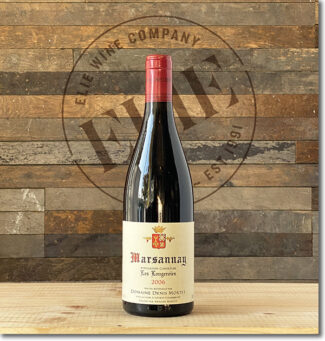 Domaine Denis Mortet, 2006 Marsannay ‘Les Longeroies’ ($150)
Domaine Denis Mortet, 2006 Marsannay ‘Les Longeroies’ ($150)
For a fuller description of the climat, see below ‘Les Longeroies’. The northern portion of Marsannay rests on a large block of rock with younger oolite at the very top of the slopes. These rocks include White Oolite at the top and hard, pink Prémeaux limestone below. The middle and lower portions include sandy marl and ancient alluvium from the old Ouche riverbed. The wine is elegant and structured, showing glossy cherry inflected with minerality; of Mortet’s 2006 in particular, Jancis Robinson said, “Arnaud Mortet is clearly determined to live up to the high standards of his late father Denis.”
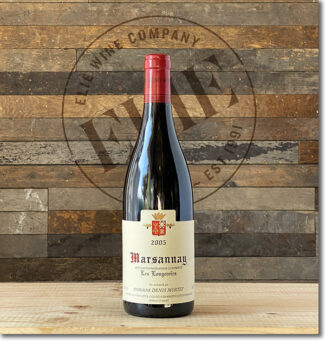 Domaine Denis Mortet, 2005 Marsannay ‘Les Longeroies’ ($160)
Domaine Denis Mortet, 2005 Marsannay ‘Les Longeroies’ ($160)
Les Longeroies—a combination of the words for ‘long’ and ‘narrow’—is an 89-acre vineyard more than a half a mile long from north to south and sitting at an elevation exceeding nine hundred feet. It is divided into three parcels: Dessus des Longeroies, Bas des Longeroies, and En Montchenevoy. Slopes, facing southeast, are moderate. Mortet’s 2005 example is filled with exquisite dense fruit and is still developing despite nearly two decades in the bottle.
NEW ARRIVALS
Maranges (Côte de Beaune, Red Burgundy)
As Marsannay is the northernmost appellation in the Côte de Nuits, Maranges in the southernmost wine-producing commune in the Côte de Beaune. Technically, of course, Maranges is inside the Saône et Loire administrative district, the Côte d’Or, but the local geology and wine style here mean that it continues to be considered a part of the Côte de Beaune.
Granted AOC status in 1989, the zone is formed from three communes; Cheilly-lès-Maranges, Dezize-lès-Maranges and Sampigny-lès-Maranges.
Maranges has a handful of Premier Cru vineyards clustered between its villages, and they run contiguously with those of neighboring Santenay to the east, where the soils are reminiscent of those further up the Côte d’Or escarpment, containing a relatively high level of limestone and clay.
Domaine Bertrand Bachelet
Maranges 2019
Bertrand Bachelet took over the family estate from his father Jean-Louis in 2011, making him the fourth generation in an unbroken line of winegrowers. Like the generations that came before, he was driven by passion, both for making wine and for finding the voice of the terroir. Bachelet currently covers 32 acres stretching from in Dezize-lès-Maranges (one of the three villages that makes up the Maranges appellation) to Pommard in the Côte de Beaune.
Relatively unknown until recently, the increasing prices of more established villages has opened the door for smaller, relatively young appellations like Maranges to strut their stuff. From a terroir perspective, Maranges is similar to the rest of the Côte, the more clay dominated vineyards of the plains giving way to the limestone slope that rises into the distance.
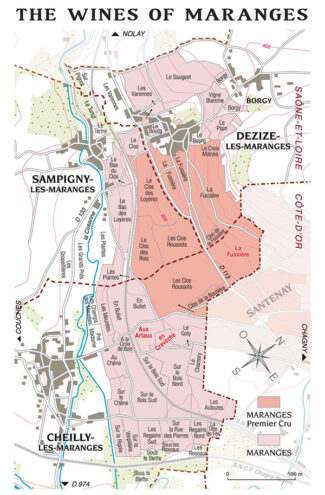
While managing the vines, Bachelet applies the principles of lutte raisonnée, with as little intervention in the winery as possible. For his red wines, the fruit is partially or completely destemmed and a gentle extraction is employed—a technique particularly useful for Maranges grapes, of which Bachelet says, “It can be quite sturdy so I try to bring out the fruit profile more. The amount of new oak I use ranges from 20% to 50%, according to the vineyard site.”
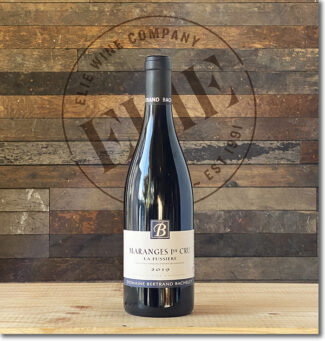 Domaine Bertrand Bachelet, 2019 Maranges Premier Cru La Fussière ($45)
Domaine Bertrand Bachelet, 2019 Maranges Premier Cru La Fussière ($45)
The hundred-acre La Fussière is the most important vineyard in Maranges, located near Cheilly and Dezize-lès-Maranges at the very southern end of the Côte d’Or. The climat has an unusual aspect: the Côte d’Or hillside curves westward at this end, which means that the hillside of Maranges faces directly south rather than the usual southeast, giving the vines all-day exposure to sunlight, helping with ripening and ensuring that the wines are richly perfumed and full-bodied. This one is soft and vibrant, with classic Burgundian cherry and plum.
*click image for more info
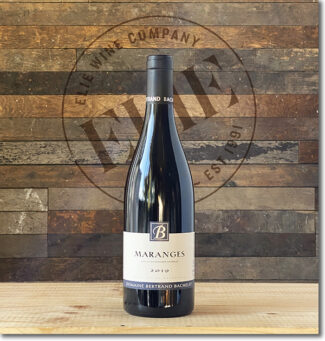 Domaine Bertrand Bachelet, 2019 Maranges ($37)
Domaine Bertrand Bachelet, 2019 Maranges ($37)
100% Pinot Noir in clay and limestone soil; extractions are made with minimal intervention, just some pigeage and remontage, the placed in barrels for one year using about 10% new oak. The wine shows a silky texture, fresh and elegant with airy aromas that exhibit background nuances of earth, flowers and spice.
*click image for more info
Côte de Nuits Vintage Journal
2019: Concentrated and Vibrant
Excitement around the 2019 Burgundy vintage remains high, although the summer put climate change front and center; much of the crop was lost due to vines either being too stressed or grapes being sunburnt. The berries that did survive were, in general, richly concentrated. The red wines are, in general, complex, richly fruit-forward and refined, with the best examples likely to cellar well. The whites are also extremely concentrated, rich, and ripe, but without losing the crucial balance and elegance. In both categories, small yields means limited allocations, particularly of the top wines, and demand is high.
2018: Solar, Voluptuous with Immediate Appeal
Noteworthy for having the hottest and driest growing seasons since the intense heatwave of 2003, 2018 provided perfect weather during flowering and again at harvest, with some drought between. The crop was among the biggest in years with the red wines of Côte de Nuits acclaimed for being mostly complex wines, enjoyable young, with good potential to age.
2017: Supple and Accessible
Low yields may or may not produce excellent vintages, but high yielding vintages like 2017 tend to produce what the French refer to as ‘restaurant wines,’ meaning that they offer plenty of fragrance, attractive fruit, lacy tannins, reasonably strong terroir characters and an overall air of approachability. 2017 was the most consistent growing season in several years, and many of the vines that had suffered badly in the previous year’s frosts went into overdrive and were, in some cases, overladen with fruit. Some producers chose to green harvest to counter this problem, as too much fruit can result in a lack of concentration in the individual berries. The Pinot Noir harvest began in early September and was finished before the heavy rains of October set it, leading to some spectacular wines.
2015: Ripe, Vivacious, Structured and Age-Worthy
An ideal growing season until excessive July heat began to pose some problems, which were eased by intermittent rains in August. Results were excellent overall with lush, ripe, broad-beamed wines produced in most Premier Cru sites.
2014: Fresh, Vital and Energetic, with More Length Than Amplitude
A warm, dry spring led to early bud break, but in late June, hailstorms decimated some vineyards in the north, causing reduced yields and (the silver lining) more highly concentrated wines. A drying wind and a sunny September made this vintage especially friendly to Chardonnay while the Pinot Noir produced wines with a freshness ideal for early drinking, but the best examples tended to have enough character and structure to warrant long-term cellaring.
2006: Fleshy, with Fruit and Ripe Tannins
The ‘Vintage of the Century’ (2005) is a tough act to follow, and as a result, many of the top red wines from 2006 have been overlooked. Some tough weather spells throughout the growing season cut into yields, with a freak July hailstorm that devastated some vineyards, but for the most part, Côte de Nuits red wines were pretty and aromatic examples, light on their feet up front, with the best examples reaching their peak about now.
2005: Well-Endowed, Full and Structured, Destined For Long Aging
t’s hard to find a bad word to say about the Côte de Nuits’ 2005 vintage—the wines are full and texturally smooth, while retaining freshness and elegance. But to rank as a truly outstanding vintage, a wine requires more, and 2005 delivered, an unusually harmonious and complex balance of fine elements to edge the synergies into the ethereal.
Christophe Roumier (of Domaine Georges & Christophe Roumier) says, “The weather for red Burgundy 2005 in the Côte de Nuits was perfect, a vintner’s dream. Summer came early, with warm weather in June and a cool August that was notably dry. A little rain in September was just sufficient to give a last boost to the maturation, but not to dilute the grapes. The evolution of the sugar and acidity was excellent, encouraged by slow maturation, yielding good sugar levels and ripe tannins while retaining the acidity. This generosity is unusual, and adjustments were, in this case, entirely unnecessary.”
- - -
Posted on 2022.11.03 in Marsannay, Maranges, France, Burgundy, Wine-Aid Packages
Featured Wines
- Notebook: A’Boudt Town
- Saturday Sips Wines
- Saturday Sips Review Club
- The Champagne Society
- Wine-Aid Packages
Wine Regions
Grape Varieties
Aglianico, Albarino, Albarín Blanco, Albarín Tinto, Albillo, Aleatico, Arbanne, Aubun, Barbarossa, barbera, Beaune, Biancu Gentile, bourboulenc, Cabernet Franc, Cabernet Sauvignon, Caino, Caladoc, Calvi, Carcajolu-Neru, Carignan, Chablis, Chardonnay, Chasselas, Clairette, Corvina, Cot, Counoise, Erbamat, Ferrol, Fiano, Frappato, Friulano, Fromenteau, Fumin, Garnacha, Gewurztraminer, Godello, Graciano, Grenache, Grolleau, Groppello, Juan Garcia, Lambrusco, Loureira, Macabeo, Macabou, Malvasia, Malvasia Nera, Marsanne, Marselan, Marzemino, Melon de Bourgogne, Merlot, Mondeuse, Montanaccia, Montepulciano, Morescola, Morescono, Moscatell, Muscadelle, Muscat, Natural, Nero d'Avola, Parellada, Patrimonio, Petit Meslier, Petit Verdot, Pineau d'Aunis, Pinot Auxerrois, Pinot Blanc, Pinot Gris, Pinot Meunier, Pinot Noir, Poulsard, Prieto Picudo, Rondinella, Rousanne, Roussanne, Sangiovese, Sauvignon Blanc, Savignin, Semillon, Souson, Sparkling, Sumoll, Sylvaner, Syrah, Tannat, Tempranillo, Trebbiano, Trebbiano Valtenesi, Treixadura, Trousseau, Ugni Blanc, vaccarèse, Verdicchio, Vermentino, Viognier, Viura, Xarel-loWines & Events by Date
- April 2024
- March 2024
- February 2024
- January 2024
- December 2023
- November 2023
- October 2023
- September 2023
- August 2023
- July 2023
- June 2023
- May 2023
- April 2023
- March 2023
- February 2023
- January 2023
- December 2022
- November 2022
- October 2022
- September 2022
- August 2022
- July 2022
- June 2022
- May 2022
- April 2022
- March 2022
- February 2022
- January 2022
- December 2021
- November 2021
- October 2021
- September 2021
- August 2021
- July 2021
- June 2021
- May 2021
- April 2021
- March 2021
- February 2021
- January 2021
- December 2020
- November 2020
- October 2020
- September 2020
- August 2020
- July 2020
- June 2020
- May 2020
- April 2020
- March 2020
- February 2020
- January 2020
- December 2019
- November 2019
- October 2019
- September 2019
- August 2019
- July 2019
- June 2019
- May 2019
- April 2019
- March 2019
- February 2019
- January 2019
- December 2018
- November 2018
- October 2018
- September 2018
- August 2018
- July 2018
- June 2018
- May 2018
- April 2018
- March 2018
- February 2018
- January 2018
- December 2017
- November 2017
- October 2017
- September 2017
- August 2017
- July 2017
- June 2017
- May 2017
- April 2017
- March 2017
- February 2017
- January 2017
- December 2016
- November 2016
- October 2016
- September 2016
- August 2016
- July 2016
- June 2016
- May 2016
- April 2016
- March 2016
- February 2016
- January 2016
- December 2015
- November 2015
- October 2015
- September 2015
- August 2015
- July 2015
- June 2015
- May 2015
- April 2015
- March 2015
- February 2015
- January 2015
- December 2014
- November 2014
- October 2014
- September 2014
- August 2014
- July 2014
- June 2014
- April 2014
- March 2014
- February 2014
- January 2014
- December 2013
- November 2013
- October 2013
- September 2013
- August 2013
- July 2013
- June 2013
- May 2013
- April 2013
- March 2013
- February 2013
- January 2013
- December 2012
- November 2012
- October 2012
- February 2004
Search



